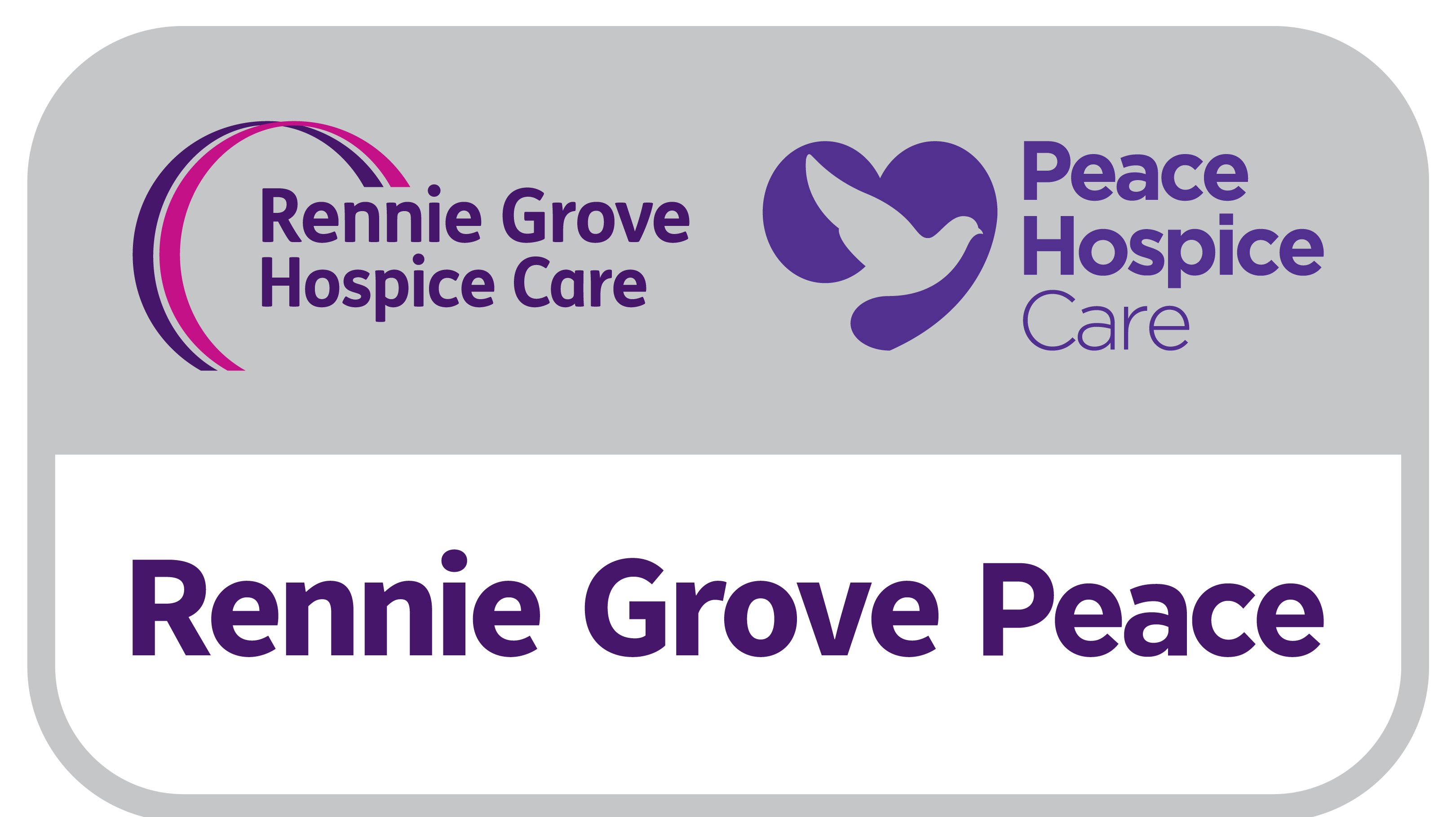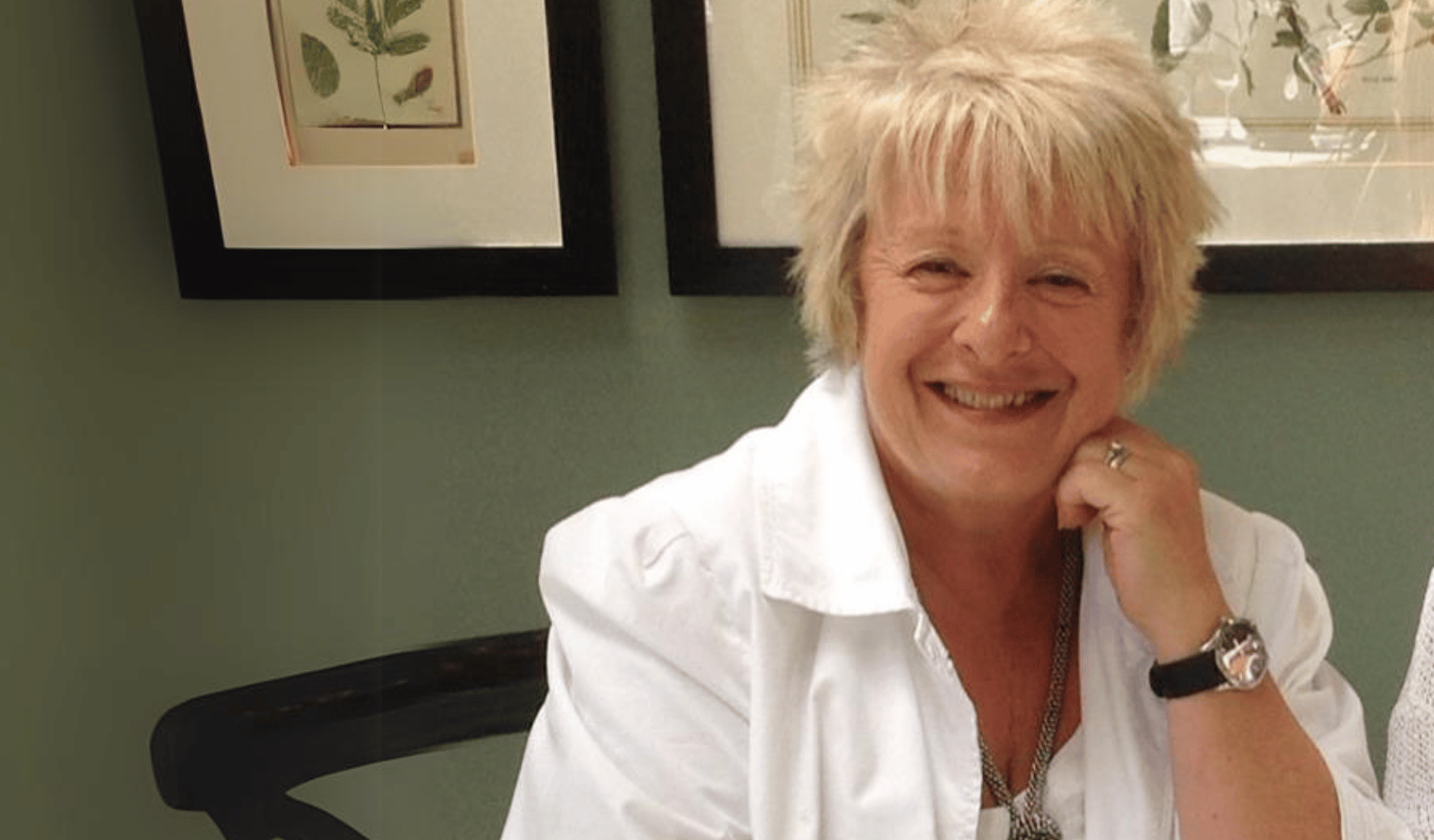“Iain Rennie Hospice at Home is written through me like a stick of rock.” – Rowena Dean
Rowena Dean became involved with Iain Rennie Hospice at Home as a volunteer fundraiser when she had a break to do some studying. Not long after, she became the first paid non-clinical employee, then Chief Executive from 1998 to 2008.
“In 1987 I took some time off work to do some accountancy exams. Alison, a friend who I knew through my children’s school, was a nurse working at the hospice and she mentioned that her mum was doing a fundraiser and needed help. Shortly after, Alison’s mum, Amy, got in touch and persuaded me to help her with the event.
“So, the very first Tring fundraising event was a line dance with a raffle and it was hugely successful. I was then asked by Amy if I could be part of a local fundraising group, so with a group of friends we started to organise more fundraising events.
“We felt as though anything was possible.”
“Amy had a contact within the RAF base at Halton who agreed to let us use an aircraft hangar for a weekend. It was a huge venue, but we filled it with 400 people at a 1940s Gala night and the following day had a craft fair in there. It was a great success and really put us on the map. As a result, local people started talking more about the hospice and how they could help. We felt as though anything was possible.
“There was no social media back then, so to promote our events we relied on newspapers, posters and word of mouth.”
“People rarely turned us down when we asked for help – it was so different from the corporate world that I had worked in before. Of course, there was no social media back then, so to promote our events we relied on newspapers, posters and word of mouth.
“During this time, the hospice was growing and there was a need for someone to run the non-nursing side of the hospice. I started work part time in 1991 as the first paid non-clinical staff member covering fundraising, finance and admin. At the same time, I learnt how to use a computer and became a lover of excel!
“A couple of years later, Robert Breakwell joined the organisation as Head of Fundraising and I concentrated on Admin and Finance. Sue Varvel became Head of Nursing, making a triple executive, which worked very well for several years.
“In 1998, the Board of Trustees, recognising the position the organisation had reached, approved the appointment of a Chief Executive with overall responsibility for the charity. I applied for the role and was successful. About the same time, we appointed a head of Retail to run and expand our shop business, a finance manager and HR Manager
“We were “all the time promoting the philosophy of hospice care delivered at home.”
“Having a wonderful team of very competent, dedicated and complimentary heads of department meant that I could focus on external issues. I became a Trustee of Help the Hospices (now Hospice UK) to promote hospice at home as a recognised provider of specialist and generalist palliative care. I negotiated contracts with the local Health funders – not always generous in their agreements! I worked with Sue Varvel to establish a Forum for Hospice at Home and advised other newly established hospice at home services. All of us gave talks to local community organisations and at regional and national conferences, all the time promoting the philosophy of hospice care delivered at home.
“Funding was always a central focus for all the team and we tried to establish a cost-conscious approach to running the business side of the charity. Everyone contributed to drawing up the annual budget and we paid close attention to the monthly management accounts.
“Our Mantra in those days was “Get the people right, and everything else will be right”
“I felt strongly that the senior team should attend Trustees meeting rather than just me as Chief Executive. This meant that their work and efforts were directly appreciated by the trustees. I established yearly ‘Vision Days’ where all the staff and trustees, came together for a full day to discuss the charity’s strategy and to examine specific issues at the time. These days generated a great team spirit and meant that the growing team had a chance to meet each other. Our Mantra in those days was “Get the people right, and everything else will be right”
“Peggy had been raising money for us running a market stall since 1992. One day, she came into the office and said that she had found a shop, done a deal with a landlord and had all the goods ready to go into it!”
“There were amazing people who gave their time and money over the years. Peggy Bainbridge was one of them. Peggy had been raising money for us running a market stall since 1992 and she was telling me that we should open a shop. One day, she came into the office and said that she had found a shop, done a deal with a landlord and had all the goods ready to go into it! That was how our first shop was opened.
“We went to Ikea, got lots of Billy Bookcases and made the shop look wonderful!”
“I remember asking a local tradesman, Steve, if he would fit out our first shop with shelves. We went to Ikea, got lots of Billy Bookcases and made the shop look wonderful! Steve continued to fit out our shops for many years after that. One day, we got a call from a local Miss Selfridge store that was closing and they asked if we wanted all their shop fittings. Steve went over with a van and collected it all – it was like Christmas! When we were starting out there was this element of serendipity of people coming forward saying ‘do you want this?’ or ‘can we help with that?’.
“I always loved the retail side of the business and made sure that every new staff member did a stint in one of our shops. In this way they would meet local volunteers, many of whom had direct experience of the IRHH service.
“I didn’t fully recognise the whole impact of hospice care until I saw first-hand the difference it made for someone I loved.”
“In 2006, my very close friend, Deborah, was referred to the hospice service for end of life care. Deborah had been a very active volunteer for Iain Rennie Hospice at Home, fundraising, working on the accounts and as an early trustee. I admit that perhaps I didn’t fully recognise the whole impact of hospice care until I saw first-hand the difference it made for someone I loved. The care the IRHH nurses and other clinicians provided astounded me and still does. The support, the devotion and the ability to always know how to deal with difficult situations, is astonishing.
“I was always aware of how much the nurses constantly recognised and praised the fundraisers, the admin staff, the volunteers and everyone who supported the nursing teams.
“At a talk “one of the five founding nurses had no notes, no fancy overheads, she just talked about what the nurses did and how families could be empowered to care for their loved ones. She was spell binding.”
“I recall in the very early days of my involvement with IRHH, going to a talk in Beaconsfield to observe Mary Robson, one of the five founding nurses, at her best, talking to an audience about IRHH. She had no notes, no fancy overheads or, heaven forbid, PowerPoint – she just talked about what the nurses did and how families could be empowered to care for their loved ones. She was spell binding. The poem she read at that event was one that I would use years later at my father’s funeral – Henry Van Dyke’s “Gone from my Sight” – I’ve never forgotten it.
“Mary told me when I first joined Iain Rennie Hospice at Home, that I should trust that all would be well, to have a complete belief in what we were doing, to have faith that the service would thrive and grow. It certainly has.”

